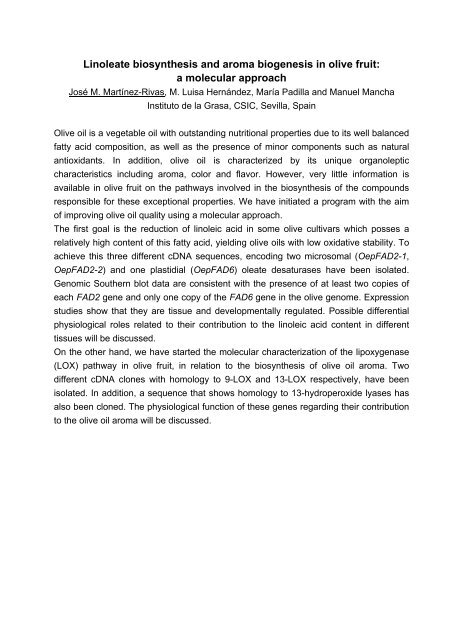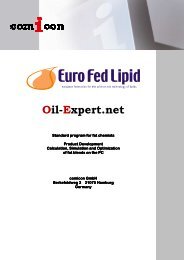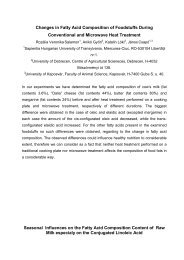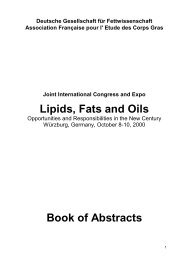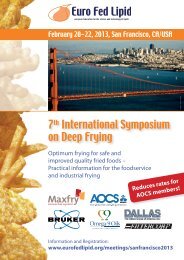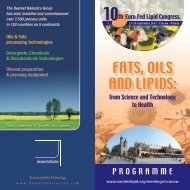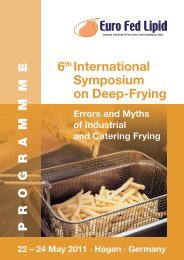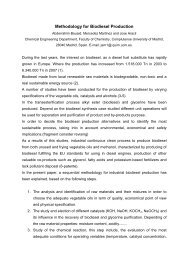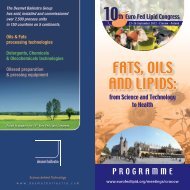Abstracts now available online - Euro Fed Lipid
Abstracts now available online - Euro Fed Lipid
Abstracts now available online - Euro Fed Lipid
Create successful ePaper yourself
Turn your PDF publications into a flip-book with our unique Google optimized e-Paper software.
Linoleate biosynthesis and aroma biogenesis in olive fruit:<br />
a molecular approach<br />
José M. Martínez-Rivas, M. Luisa Hernández, María Padilla and Manuel Mancha<br />
Instituto de la Grasa, CSIC, Sevilla, Spain<br />
Olive oil is a vegetable oil with outstanding nutritional properties due to its well balanced<br />
fatty acid composition, as well as the presence of minor components such as natural<br />
antioxidants. In addition, olive oil is characterized by its unique organoleptic<br />
characteristics including aroma, color and flavor. However, very little information is<br />
<strong>available</strong> in olive fruit on the pathways involved in the biosynthesis of the compounds<br />
responsible for these exceptional properties. We have initiated a program with the aim<br />
of improving olive oil quality using a molecular approach.<br />
The first goal is the reduction of linoleic acid in some olive cultivars which posses a<br />
relatively high content of this fatty acid, yielding olive oils with low oxidative stability. To<br />
achieve this three different cDNA sequences, encoding two microsomal (OepFAD2-1,<br />
OepFAD2-2) and one plastidial (OepFAD6) oleate desaturases have been isolated.<br />
Genomic Southern blot data are consistent with the presence of at least two copies of<br />
each FAD2 gene and only one copy of the FAD6 gene in the olive genome. Expression<br />
studies show that they are tissue and developmentally regulated. Possible differential<br />
physiological roles related to their contribution to the linoleic acid content in different<br />
tissues will be discussed.<br />
On the other hand, we have started the molecular characterization of the lipoxygenase<br />
(LOX) pathway in olive fruit, in relation to the biosynthesis of olive oil aroma. Two<br />
different cDNA clones with homology to 9-LOX and 13-LOX respectively, have been<br />
isolated. In addition, a sequence that shows homology to 13-hydroperoxide lyases has<br />
also been cloned. The physiological function of these genes regarding their contribution<br />
to the olive oil aroma will be discussed.


